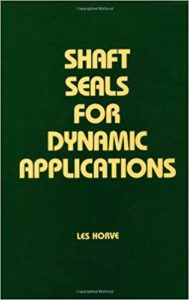Shaft Seals for Dynamic Applications
Shaft Seals for Dynamic Applications
Shaft Seals for Dynamic Applications All machines must sealed to retain lubricants and other fluids. Seals also prevent the entry of contaminants, which can destroy bearings, gears, and other moving components contained within the machine housing. Seals can be classified into two major categories: dynamic and static. Radial lip shaft seals are the most widely used seal types throughout industry today for rotating, oscillating, and reciprocating shaft applications.
Shaft Seals for Dynamic Applications is a practical comprehensive reference handbook designed for seal users, seal designers, lubrication engineers, maintenance personnel, and chemists, and it can also used as a teaching guide for seminars.
You can also Read Hydrostatic Aerostatic and Hybrid Bearing Design
Content:
- Preface
![Shaft seals for dynamic applications]()
- Introduction
- Elastomeric Materials for Radial Lip Seals
- Lubricants
- Seal Design
- Specifications and Recommended Practices
- Principles of Seal Operation
- Measuring Seal Operating Characteristics
- Effect of Operating Parameters on Seal Performance
- The Effect of Seal Design Parameters on Performance
- Sealing System Failure Analysis
- Radial Lip Seal Applications
- Manufacturing Methods for Radial Lip Seals
- Quality Assurance for Sealing Systems
- Appendixes
- A. Radial Lip Seal Terminology
- B. Elastomer Terminology
- C. Lubricant Terminology
- D. System of Units and Conversion Tables
- E. Nomenclature
- References
The method of preventing leakage with an elastomeric lip seal in a rotating shaft application appears to be obvious. The lip and spring stretched over the shaft, and a force generated between the lip and shaft that creates a dam to prevent leakage. The flexibility of the lip-and-spring combination will maintain the dam even if the shaft has vibrations and/or dynamic run out.
Comprehensive review of lubricants is found in Chapter 3, which describes the base oils and additives used to make a lubricating oil. The properties and test procedures used to classify lubricating greases, engine oils, gear oils, automatic transmission fluids, and specialty lubricants are described in clear terms.


Comments are closed.